Prediction and Analysis of Heart Failure Decompensation Events Based on Telemonitored Data and Artificial Intelligence Methods
Abstract
1. Introduction
2. Materials and Methods
2.1. Dataset
- Age of at least 18 years.
- Diagnosis of heart failure, as confirmed by a cardiologist.
- Recent CDEs that required diuretic adjustment (both oral and intravenous).
- Capable of using telemonitoring technology.
- Severe concomitant disease.
- Associated comorbidity with a life expectancy of less than 1 year.
- Dementia or moderate-to-severe cognitive impairment.
- Inability to use the required technology or a lack of disposition among relatives or caregivers to conduct the transmissions.
- Patients from the Bilbao–Basurto Health Organization area.
- Normal standardization: the variables were standardized (by computing their Z-norm) considering the value of all patients in the training set. By applying this standardization, the trained AI model was expected to automatically find values that are indicators for decompensation (for example, a low oxygen saturation value).
- Week standardization: the variables were standardized using the values of the week per each patient, looking for patterns of increases/decreases or trends during the week. For example, weight gain is an indicator of decompensation, which would be reflected in this type of standardization. The variables resulting from this standardization were named as “trend” variables because it is expected that they represent the trend of the variable throughout the week.
2.2. Model Training
2.2.1. Train/Test Split
2.2.2. Feature Selection: The Boruta Method
2.2.3. Missing Values
2.2.4. Classifiers
2.2.5. Classification Performance Measures and Heuristic
2.2.6. Hyperparameter Tuning
3. Results
3.1. Feature Selection: The Boruta Method
3.2. Cross-Validation
3.3. Testing Set
3.4. XGBoost
3.5. Logistic Regression
4. Discussion and Conclusions
Author Contributions
Funding
Institutional Review Board Statement
Informed Consent Statement
Data Availability Statement
Conflicts of Interest
References
- Ponikowski, P.; Voors, A.A.; Anker, S.D.; Bueno, H.; Cleland, J.G.F.; Coats, A.J.S.; Falk, V.; González-Juanatey, J.R.; Harjola, V.-P.; Jankowska, E.A.; et al. 2016 ESC Guidelines for the diagnosis and treatment of acute and chronic heart failure: The Task Force for the diagnosis and treatment of acute and chronic heart failure of the European Society of Cardiology (ESC)Developed with the special contribution of the Heart Failure Association (HFA) of the ESC. Eur. Heart J. 2016, 37, 2129–2200. [Google Scholar] [CrossRef] [PubMed]
- Lesyuk, W.; Kriza, C.; Kolominsky-Rabas, P. Cost-of-illness studies in heart failure: A systematic review 2004–2016. BMC Cardiovasc. Disord. 2018, 18, 74. [Google Scholar] [CrossRef]
- Farmakis, D.; Mehra, M.R.; Parissis, J.; Filippatos, G. Heart failure in the course of a pandemic. Eur. J. Heart Fail. 2020, 22, 1755–1758. [Google Scholar] [CrossRef] [PubMed]
- Pirrotta, F.; Mazza, B.; Gennari, L.; Palazzuoli, A. Pulmonary Congestion Assessment in Heart Failure: Traditional and New Tools. Diagnostics 2021, 11, 1306. [Google Scholar] [CrossRef] [PubMed]
- Stehlik, J.; Schmalfuss, C.; Bozkurt, B.; Nativi-Nicolau, J.; Wohlfahrt, P.; Wegerich, S.; Rose, K.; Ray, R.; Schofield, R.; Deswal, A. Continuous wearable monitoring analytics predict heart failure hospitalization: The LINK-HF multicenter study. Circ. Heart Fail. 2020, 13, e006513. [Google Scholar] [CrossRef]
- McDonagh, T.A.; Metra, M.; Adamo, M.; Gardner, R.S.; Baumbach, A.; Böhm, M.; Burri, H.; Butler, J.; Čelutkienė, J.; Chioncel, O. 2021 ESC Guidelines for the diagnosis and treatment of acute and chronic heart failure: Developed by the Task Force for the diagnosis and treatment of acute and chronic heart failure of the European Society of Cardiology (ESC) With the special contribution of the Heart Failure Association (HFA) of the ESC. Eur. Heart J. 2021, 42, 3599–3726. [Google Scholar] [PubMed]
- Brahmbhatt, D.H.; Cowie, M.R. Remote management of heart failure: An overview of telemonitoring technologies. Card. Fail. Rev. 2019, 5, 86. [Google Scholar] [CrossRef]
- Senarath, S.; Fernie, G.; Roshan Fekr, A. Influential Factors in Remote Monitoring of Heart Failure Patients: A Review of the Literature and Direction for Future Research. Sensors 2021, 21, 3575. [Google Scholar] [CrossRef]
- Ski, C.F.; Thompson, D.R.; Brunner-La Rocca, H.-P. Putting AI at the centre of heart failure care. Esc Heart Fail. 2020, 7, 3257. [Google Scholar] [CrossRef]
- DeVore, A.D.; Wosik, J.; Hernandez, A.F. The future of wearables in heart failure patients. JACC Heart Fail. 2019, 7, 922–932. [Google Scholar] [CrossRef]
- Zhu, Y.; Gu, X.; Xu, C. Effectiveness of telemedicine systems for adults with heart failure: A meta-analysis of randomized controlled trials. Heart Fail. Rev. 2020, 25, 231–243. [Google Scholar] [CrossRef]
- Larburu, N.; Artetxe, A.; Escolar, V.; Lozano, A.; Kerexeta, J. Artificial Intelligence to Prevent Mobile Heart Failure Patients Decompensation in Real Time: Monitoring-Based Predictive Model. Mob. Inf. Syst. 2018, 2018, 1546210. [Google Scholar] [CrossRef]
- Mahoney, F.I.; Barthel, D.W. Barthel index. Md. State Med. J. 1965, 14, 61–65. [Google Scholar] [CrossRef] [PubMed]
- Chaudhry, S.I.; Wang, Y.; Concato, J.; Gill, T.M.; Krumholz, H.M. Patterns of weight change preceding hospitalization for heart failure. Circulation 2007, 116, 1549–1554. [Google Scholar] [CrossRef] [PubMed]
- Kaur, H.; Pannu, H.S.; Malhi, A.K. A Systematic Review on Imbalanced Data Challenges in Machine Learning: Applications and Solutions. ACM Comput. Surv. 2019, 52, 1–36. Available online: https://dl.acm.org/doi/abs/10.1145/3343440 (accessed on 21 December 2022). [CrossRef]
- Refaeilzadeh, P.; Tang, L.; Liu, H. Cross-validation. Encycl. Database Syst. 2009, 5, 532–538. [Google Scholar]
- Kursa, M.B.; Jankowski, A.; Rudnicki, W.R. Boruta—A System for Feature Selection. Fundam. Inform. 2010, 101, 271–285. [Google Scholar] [CrossRef]
- Pujianto, U.; Wibawa, A.P.; Akbar, M.I. K-nearest neighbor (k-NN) based missing data imputation. In Proceedings of the 2019 5th International Conference on Science in Information Technology (ICSITech), Yogyakarta, Indonesia, 23–24 October 2019; pp. 83–88. [Google Scholar]
- Géron, A. Hands-on Machine Learning with Scikit-Learn, Keras, and TensorFlow; O’Reilly Media, Inc.: Newton, MA, USA, 2022. [Google Scholar]
- Hao, J.; Ho, T.K. Machine learning made easy: A review of scikit-learn package in python programming language. J. Educ. Behav. Stat. 2019, 44, 348–361. [Google Scholar] [CrossRef]
- Domínguez-Almendros, S.; Benítez-Parejo, N.; Gonzalez-Ramirez, A.R. Logistic regression models. Allergol. Immunopathol. 2011, 39, 295–305. [Google Scholar] [CrossRef]
- González, S.; García, S.; Del Ser, J.; Rokach, L.; Herrera, F. A practical tutorial on bagging and boosting based ensembles for machine learning: Algorithms, software tools, performance study, practical perspectives and opportunities. Inf. Fusion 2020, 64, 205–237. [Google Scholar] [CrossRef]
- Wade, C. Hands-on Gradient Boosting with XGBoost and Scikit-Learn: Perform Accessible Machine Learning and Extreme Gradient Boosting with Python; Packt Publishing Ltd.: Birmingham, UK, 2020. [Google Scholar]
- Noble, W.S. What is a support vector machine? Nat. Biotechnol. 2006, 24, 1565–1567. [Google Scholar] [CrossRef]
- Cutler, A.; Cutler, D.R.; Stevens, J.R. Random Forests. In Ensemble Machine Learning: Methods and Applications; Zhang, C., Ma, Y., Eds.; Springer: Boston, MA, USA, 2012; pp. 157–175. ISBN 978-1-4419-9326-7. [Google Scholar]
- Shafique, R.; Mehmood, A.; Choi, G.S. Cardiovascular Disease Prediction System Using Extra Trees Classifier, 15 September 2019, PREPRINT (Version 1) Available at Research Square. Available online: https://doi.org/10.21203/rs.2.14454/v1 (accessed on 15 November 2022).
- Schapire, R.E. Explaining AdaBoost. In Empirical Inference: Festschrift in Honor of Vladimir N. Vapnik; Schölkopf, B., Luo, Z., Vovk, V., Eds.; Springer: Berlin/Heidelberg, Germany, 2013; pp. 37–52. ISBN 978-3-642-41136-6. [Google Scholar]
- Natekin, A.; Knoll, A. Gradient boosting machines, a tutorial. Front. Neurorobot. 2013, 7, 21. [Google Scholar] [CrossRef]
- Bradley, A.P. The use of the area under the ROC curve in the evaluation of machine learning algorithms. Pattern Recognit. 1997, 30, 1145–1159. [Google Scholar] [CrossRef]
- Zahedi, L.; Mohammadi, F.G.; Rezapour, S.; Ohland, M.W.; Amini, M.H. Search algorithms for automated hyper-parameter tuning. arXiv 2021, arXiv:210414677. [Google Scholar]
- Heart Failure Detection from Clinical and Lifestyle Information Using Optimized XGBoost with Gravitational Search Algorithm|SpringerLink. Available online: https://link.springer.com/chapter/10.1007/978-3-031-17544-2_5 (accessed on 9 January 2023).
- Guo, C.-Y.; Wu, M.-Y.; Cheng, H.-M. The Comprehensive Machine Learning Analytics for Heart Failure. Int. J. Environ. Res. Public. Health 2021, 18, 4943. [Google Scholar] [CrossRef]
- Rose, M.; Anatchkova, M.; Fletcher, J.; Blank, A.E.; Bjørner, J.; Löwe, B.; Rector, T.S.; Ware, J.E. Short and precise patient self-assessment of heart failure symptoms using a computerized adaptive test. Circ. Heart Fail. 2012, 5, 331–339. [Google Scholar] [CrossRef]
- Parajón, T.; Lupón, J.; González, B.; Urrutia, A.; Altimir, S.; Coll, R.; Prats, M.; Valle, V. Use of the “Minnesota Living With Heart Failure” quality of life questionnaire in Spain. Rev. Esp. Cardiol. Engl. Ed. 2004, 57, 155–160. [Google Scholar] [CrossRef]
- Holland, R.; Rechel, B.; Stepien, K.; Harvey, I.; Brooksby, I. Patients’ self-assessed functional status in heart failure by New York Heart Association class: A prognostic predictor of hospitalizations, quality of life and death. J. Card. Fail. 2010, 16, 150–156. [Google Scholar] [CrossRef] [PubMed]
- Almeida Junior, G.L.; Xavier, S.S.; Garcia, M.I.; Clausell, N. Hemodynamic assessment in heart failure: Role of physical examination and noninvasive methods. Arq. Bras. Cardiol. 2012, 98, e15–e21. [Google Scholar] [CrossRef] [PubMed]
- SHAPES H2020. Available online: https://shapes2020.eu/ (accessed on 22 December 2022).
- Salehinejad, H.; Sankar, S.; Barfett, J.; Colak, E.; Valaee, S. Recent Advances in Recurrent Neural Networks. arXiv 2018, arXiv:1801.01078. [Google Scholar]
- Vaswani, A.; Shazeer, N.; Parmar, N.; Uszkoreit, J.; Jones, L.; Gomez, A.N.; Kaiser, L.; Polosukhin, I. Attention is all you need. arXiv 2017, arXiv:170603762. [Google Scholar]
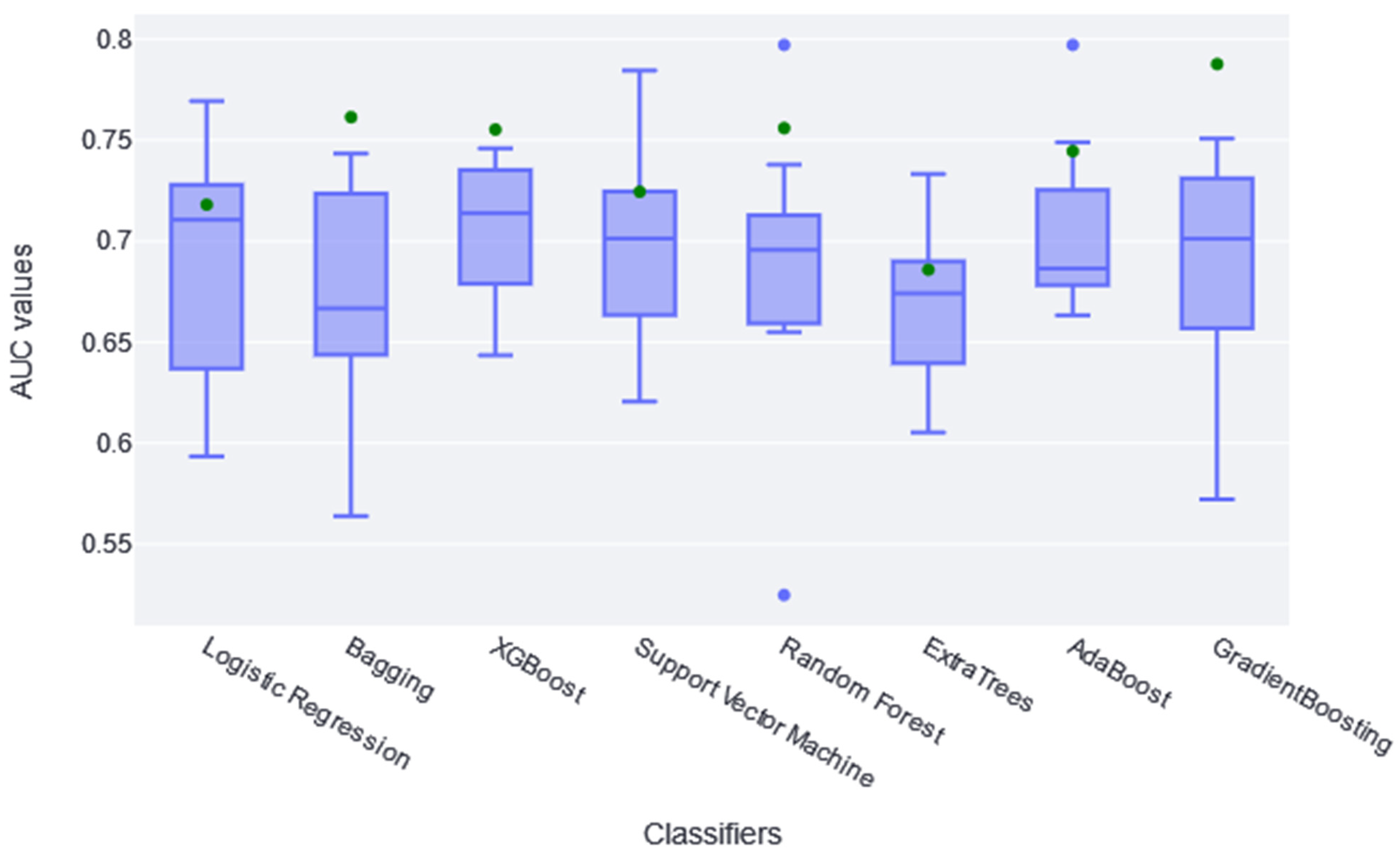
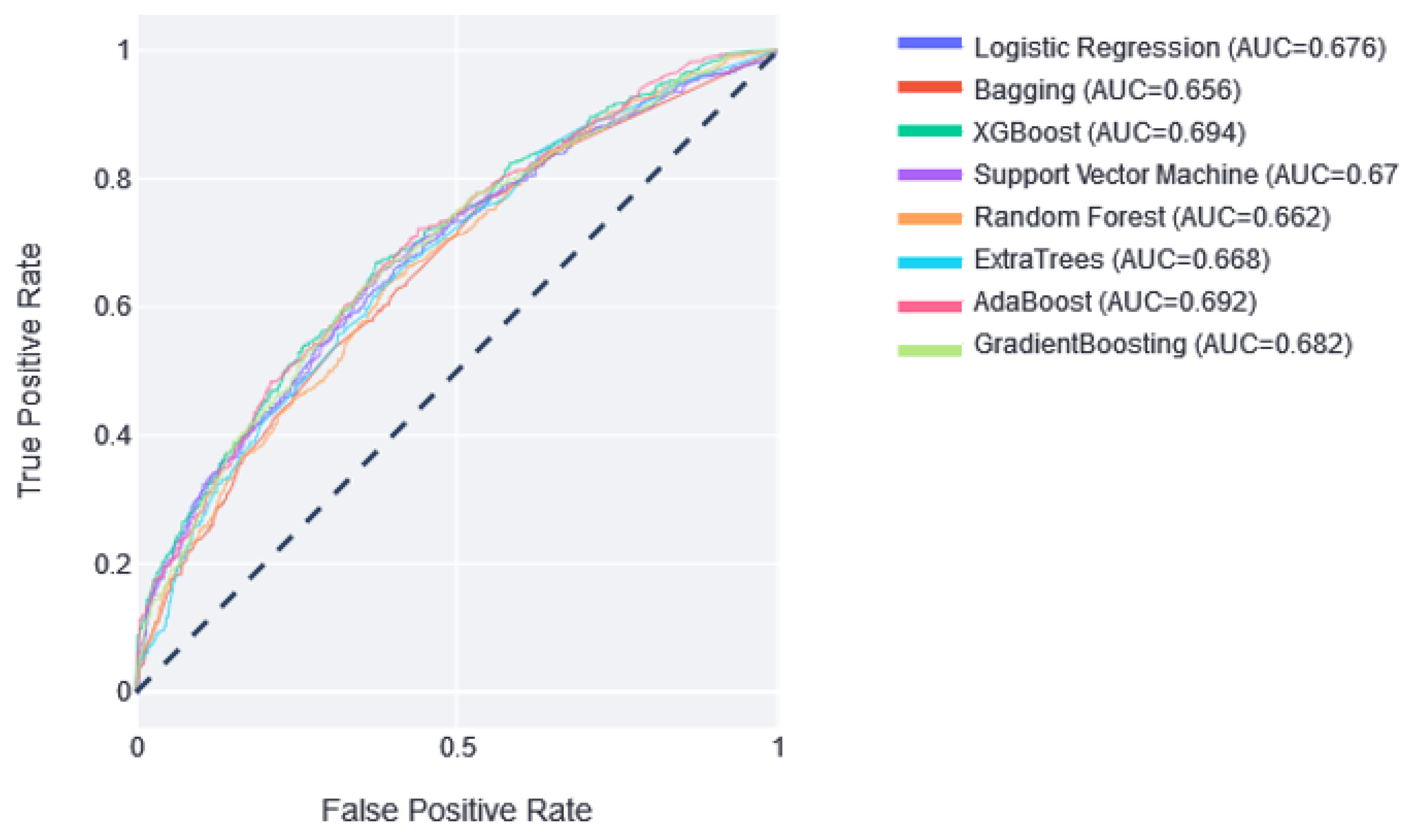

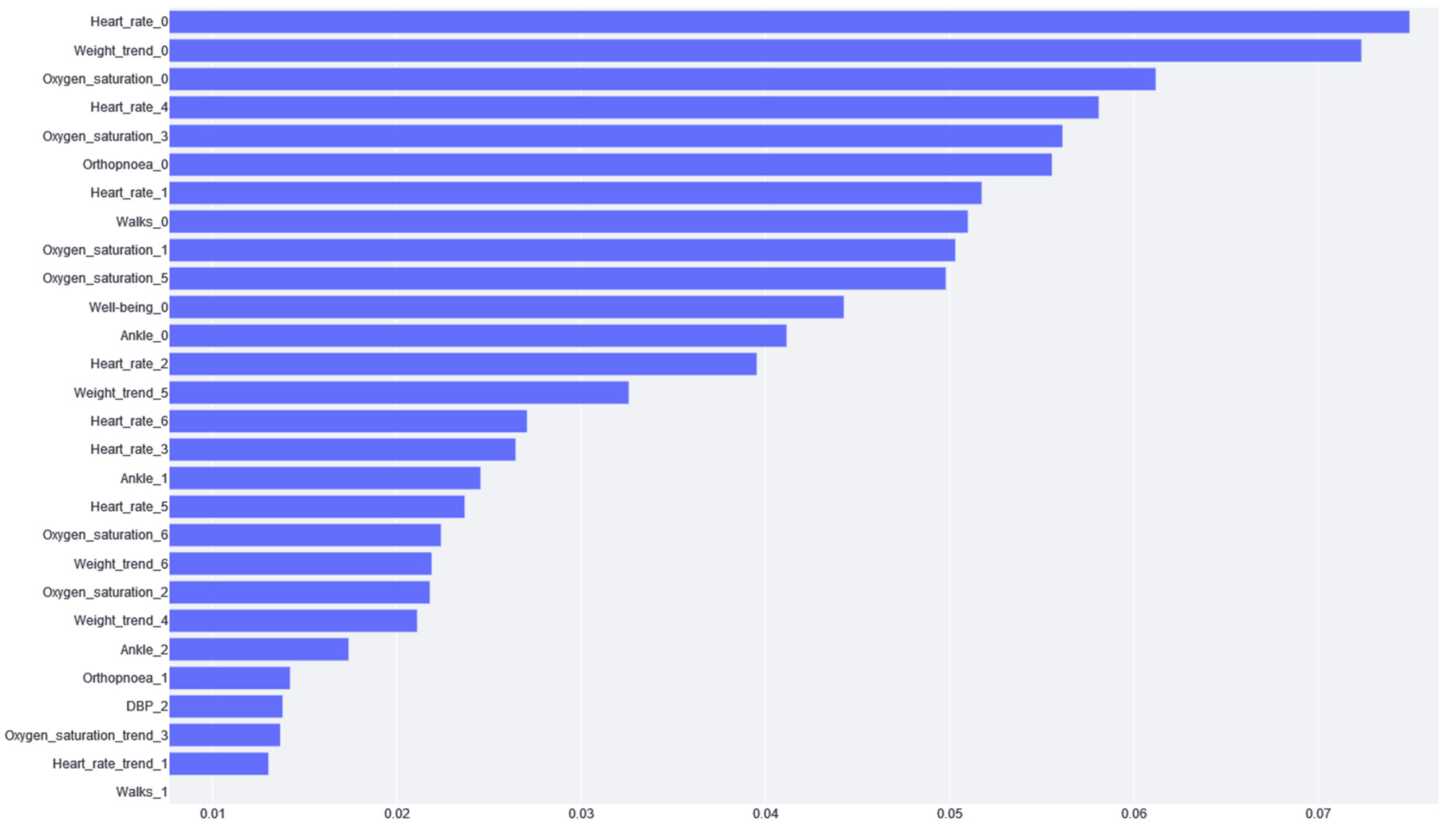
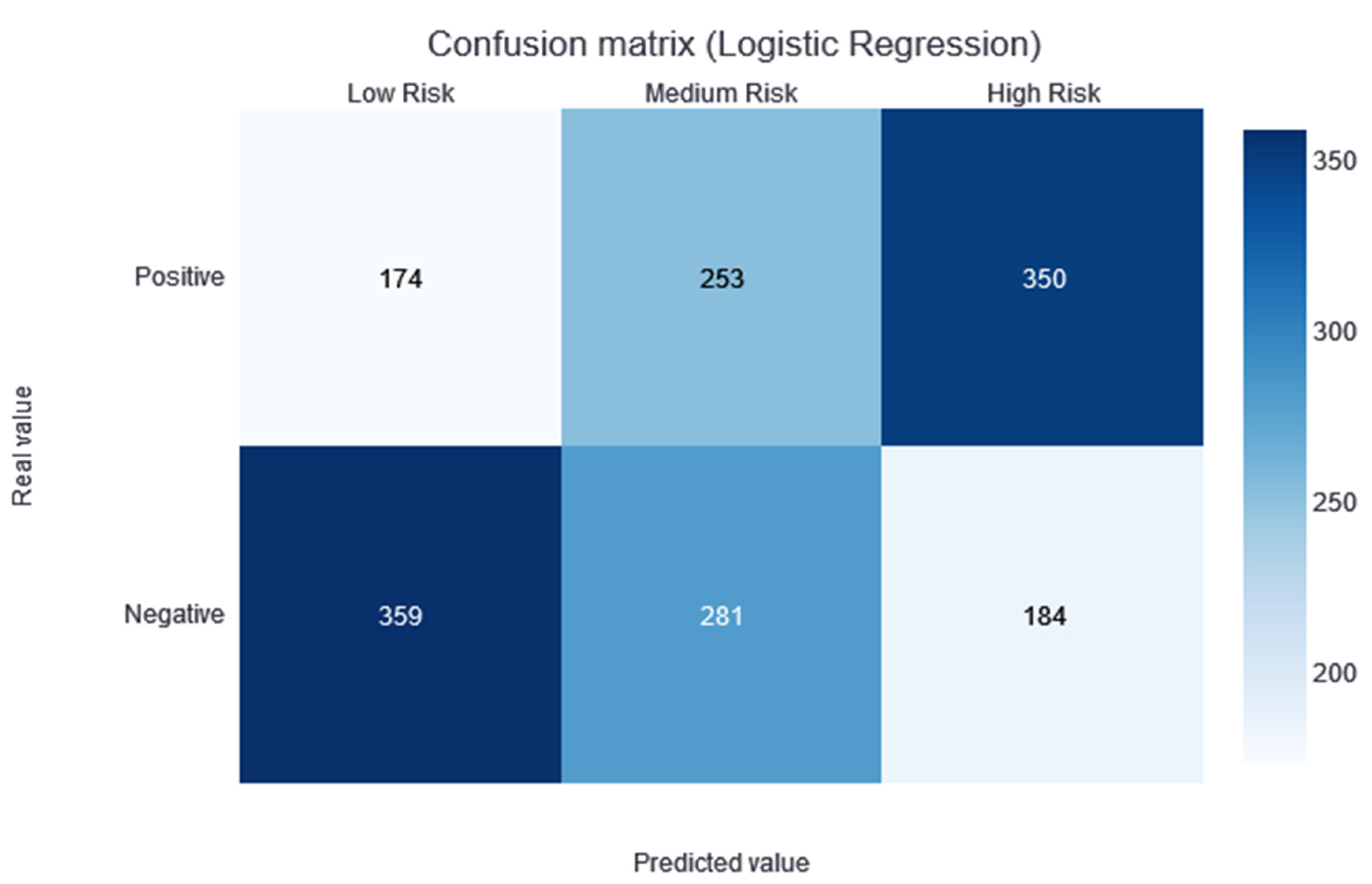
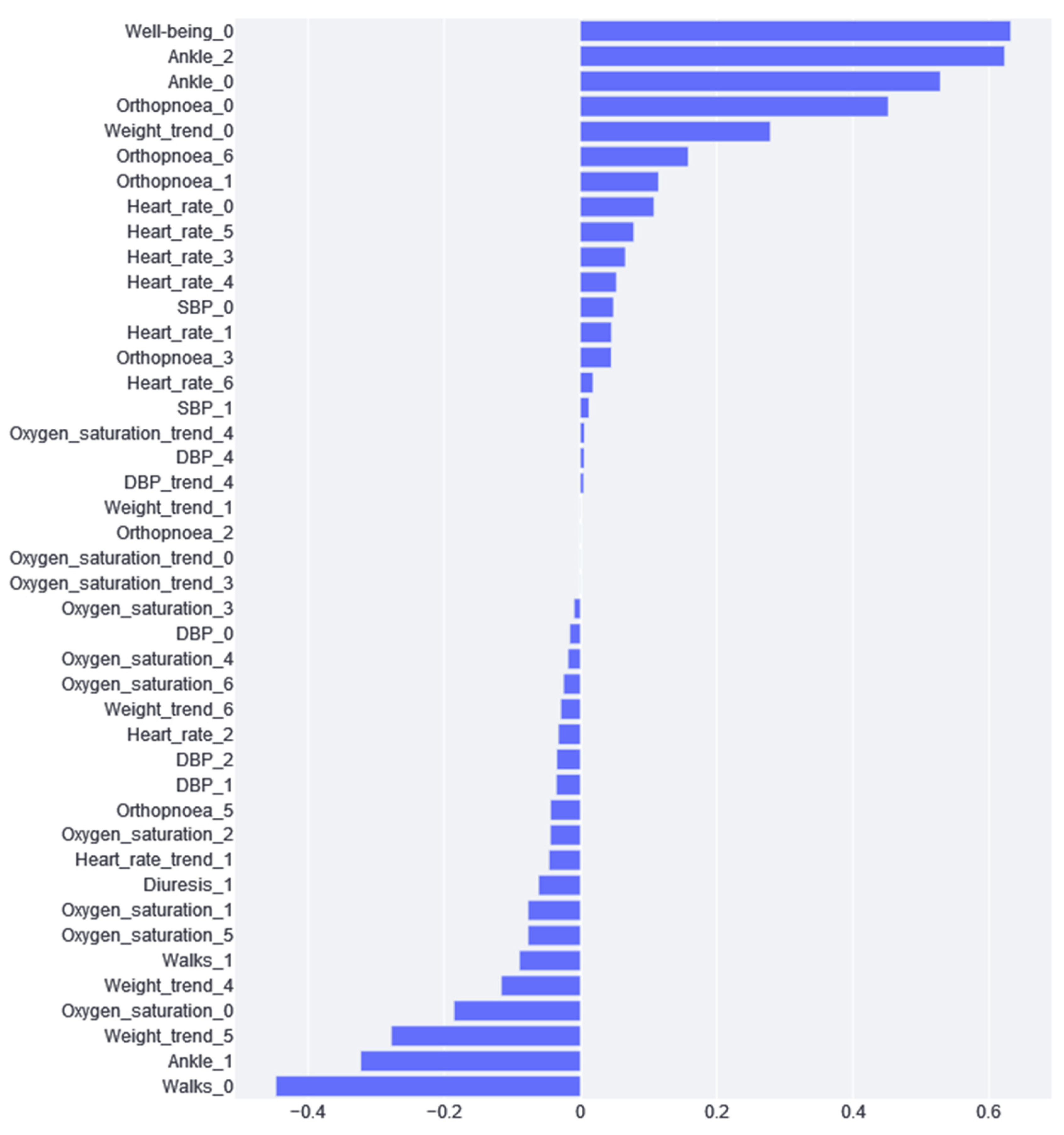
| Tag | Description |
|---|---|
| Weight | Body weight (kg) |
| SBP | Systolic blood pressure (mmHg) |
| DBP | Diastolic blood pressure (mmHg) |
| Heart_rate | Oxygen saturation (%) |
| Oxygen_saturation | Heart rate (bpm) |
| Diuresis | Urine quantity (mL) |
| Tag | Question | Possible Answer |
|---|---|---|
| Well-being | Compared with the previous 3 days, I feel: | B/W/S * |
| Medication | Is the medication affecting me well? | Yes/No |
| New medication | During the previous 3 days, did I take any medication without my clinicians’ prescription? | Yes/No |
| Diet and exercise | Am I following the diet and exercise recommendations provided by my clinician and nurse? | Yes/No |
| Ankle | In the last 3 days, my ankles are: | B/W/S * |
| Walks | Can I go walking like previous days? | Yes/No |
| Shortness of breath | Do I have fatigue or shortness of breath when I lay down in the bed? | Yes/No |
| Mucus | Do I notice that I start coughing up phlegm? | Yes/No |
Disclaimer/Publisher’s Note: The statements, opinions and data contained in all publications are solely those of the individual author(s) and contributor(s) and not of MDPI and/or the editor(s). MDPI and/or the editor(s) disclaim responsibility for any injury to people or property resulting from any ideas, methods, instructions or products referred to in the content. |
© 2023 by the authors. Licensee MDPI, Basel, Switzerland. This article is an open access article distributed under the terms and conditions of the Creative Commons Attribution (CC BY) license (https://creativecommons.org/licenses/by/4.0/).
Share and Cite
Kerexeta, J.; Larburu, N.; Escolar, V.; Lozano-Bahamonde, A.; Macía, I.; Beristain Iraola, A.; Graña, M. Prediction and Analysis of Heart Failure Decompensation Events Based on Telemonitored Data and Artificial Intelligence Methods. J. Cardiovasc. Dev. Dis. 2023, 10, 48. https://doi.org/10.3390/jcdd10020048
Kerexeta J, Larburu N, Escolar V, Lozano-Bahamonde A, Macía I, Beristain Iraola A, Graña M. Prediction and Analysis of Heart Failure Decompensation Events Based on Telemonitored Data and Artificial Intelligence Methods. Journal of Cardiovascular Development and Disease. 2023; 10(2):48. https://doi.org/10.3390/jcdd10020048
Chicago/Turabian StyleKerexeta, Jon, Nekane Larburu, Vanessa Escolar, Ainara Lozano-Bahamonde, Iván Macía, Andoni Beristain Iraola, and Manuel Graña. 2023. "Prediction and Analysis of Heart Failure Decompensation Events Based on Telemonitored Data and Artificial Intelligence Methods" Journal of Cardiovascular Development and Disease 10, no. 2: 48. https://doi.org/10.3390/jcdd10020048
APA StyleKerexeta, J., Larburu, N., Escolar, V., Lozano-Bahamonde, A., Macía, I., Beristain Iraola, A., & Graña, M. (2023). Prediction and Analysis of Heart Failure Decompensation Events Based on Telemonitored Data and Artificial Intelligence Methods. Journal of Cardiovascular Development and Disease, 10(2), 48. https://doi.org/10.3390/jcdd10020048





